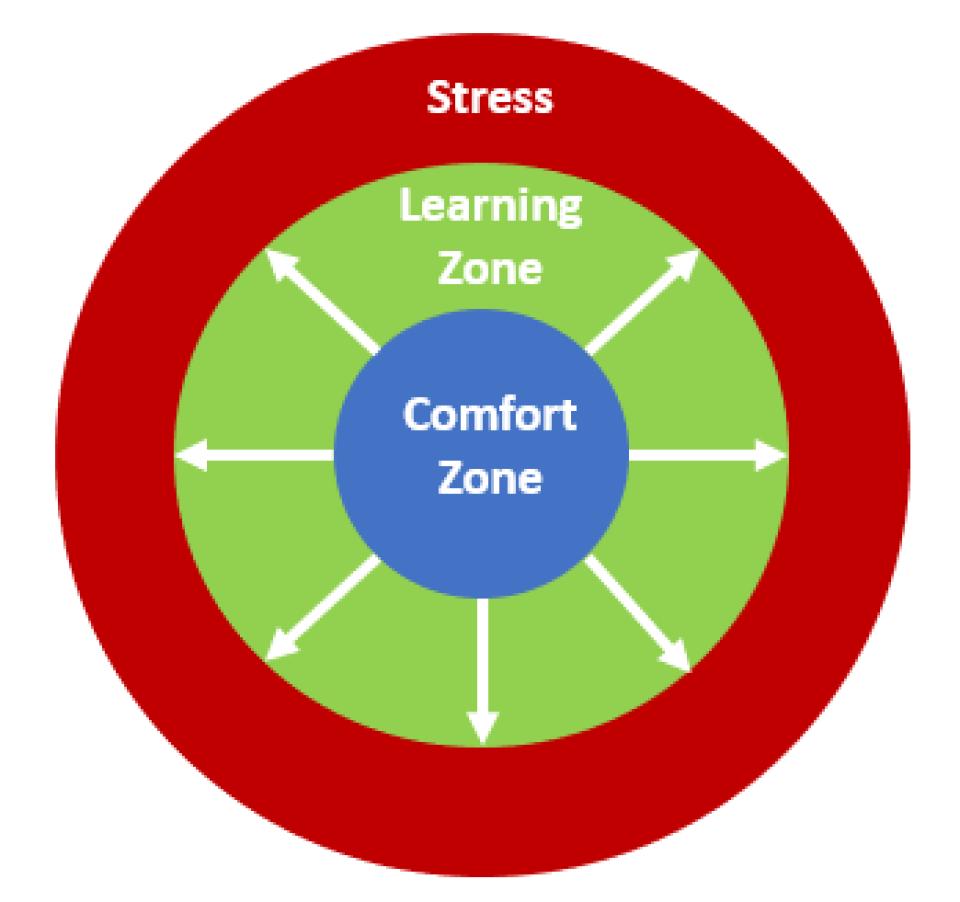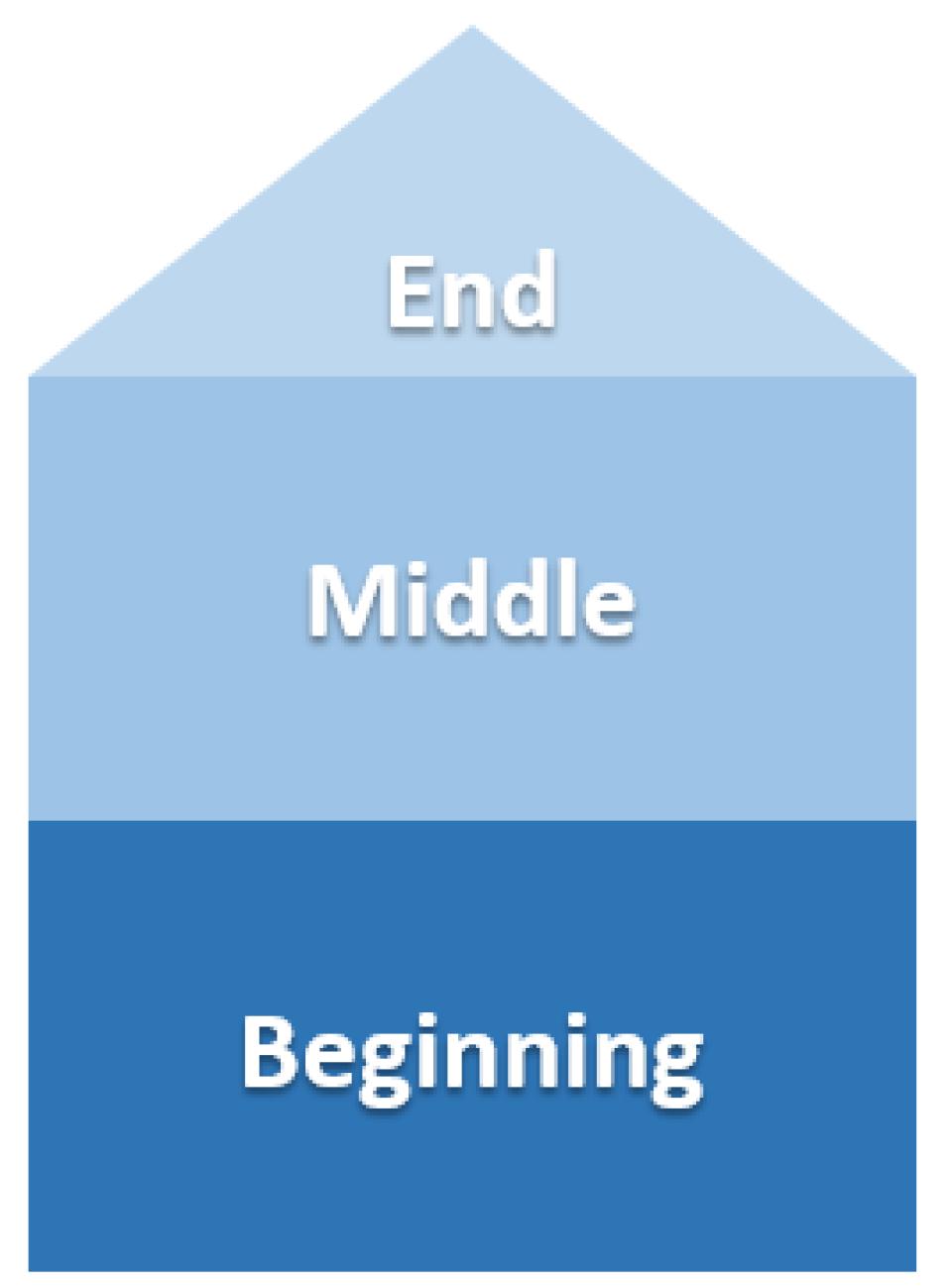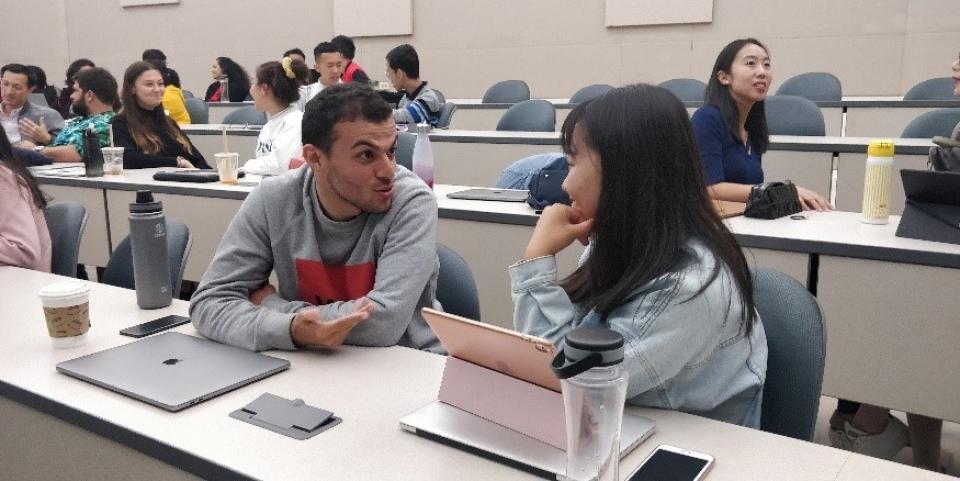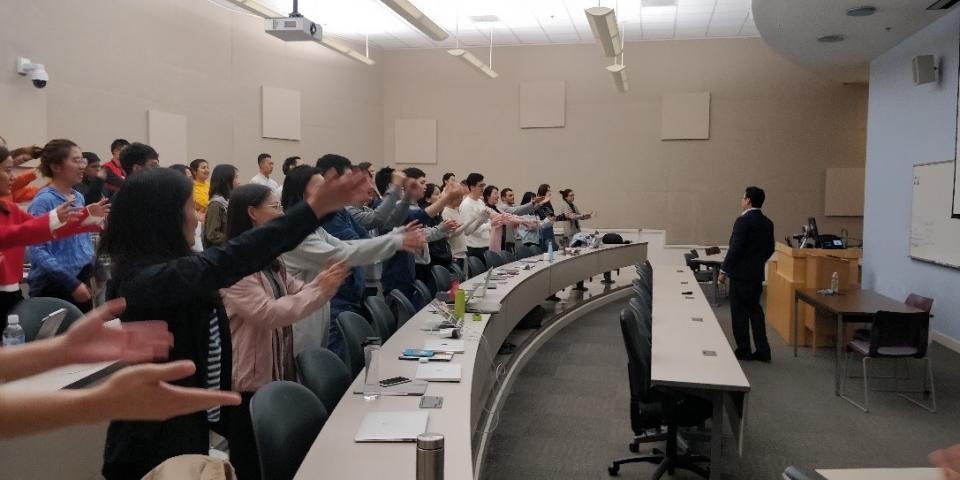Storytelling to Connect and Make Change
Coaching tips for effective and persuasive presentations

Creating organizational change comes down to persuasion—how effective can you present your case to leadership in order to enact change.
I had the good fortune of attending a workshop to hone our presentation skills in the M.S. in Business Analytics program at UC Davis. The workshop concentrated on soft skills to help us with networking and our future job search.
Doy Charnsupharindr, the CEO of Berkeley Executive Coaching Institute and a lecturer at UC Davis and UC Berkeley, led the workshop—and he walked the talk.
Charnsupharindr shared his life story, highlighting moments that later came to define who he is as a person. His presentation was personal and educational—he taught us an effective and memorable way to present ourselves.

Crafting A Narrative
Leadership is autobiographical—leaders recount important stories from their lives, and these stories not only connect with the mind, but also with the heart, and therein lies the impact we can make through storytelling.
To tell an impactful story, Charnsupharindr shared with us the trust equation: credibility + reliability + intimacy/self-orientation. As presenters, we want to display authenticity to our audience, provide streamlined presentations, and open up with real-world stories to drive engagement.
- Credibility—As data analysts in the MSBA program, we rely on accurate data and provide sources for our data sets. Accuracy is crucial, and we rely on this to craft persuasive arguments.
- Reliability—We must also avoid distractions in our presentations. Including too many words, noisy graphics or unnecessary transitions will detract from our goal of delivering our message.
- Intimacy—Charnsupharindr shared the principles of self-development with our group, which can be easily visualized by understanding the different zones in which we operate.

We all like being in the inner-most ring, our comfort zone, but that prevents us from challenging ourselves and becoming better human beings. To learn and grow, and ultimately better professionals, we must stretch outside our comfort zone and push our limits.
As we continuously move beyond our boundaries, our comfort zone expands and we enter the second ring: our learning zone. But as we push, we have to be careful to balance how far we go and for how long. If we go too far, we enter the stress zone, which can create negative effects. Spending too much time here should be avoided.
Vertical Takeoff Framework

To share an engaging and memorable story, we need to have three components: A catchy beginning, a deep but succinct middle and close with an impactful ending.
In our workshop, we worked in pairs to each come up with one story that had an impact on us. Using the vertical takeoff framework, we helped each other frame 90-second stories from our lives. This was an exercise we can use anywhere, be it interviews, blogs or just talking to people in general about what has impacted us over the years.
Choices Define Leadership
One important lesson from the workshop: We all have choices. Throughout our daily lives, we’re constantly making decisions. Those choices affect numerous outcomes in our personal and professional lives. When those choices are paired with responsibility, that truly defines leadership, Charnsupharindr said.
The beauty of the workshop was that it was interactive, funny and full of energy.
Although not all students were ready to jump right into exercises, Charnsupharindr taught us the mantra of “Aha!! Hey!! And Clap!!” to get everyone involved and pump more energy into the room.
He started with some basic breathing exercises to improve our voice quality, including pitch, tone, volume and range. He added the group clap to get everyone more comfortable and engaged.

Some of us who previously struggled to be heard in a full room found ourselves talking with confidence and conviction in a matter of just 30 minutes—it was exhilarating. We learned many skills to improve our storytelling and presentation skills, as well as our confidence and leadership capabilities. I look forward to using those skills in my next job interview.